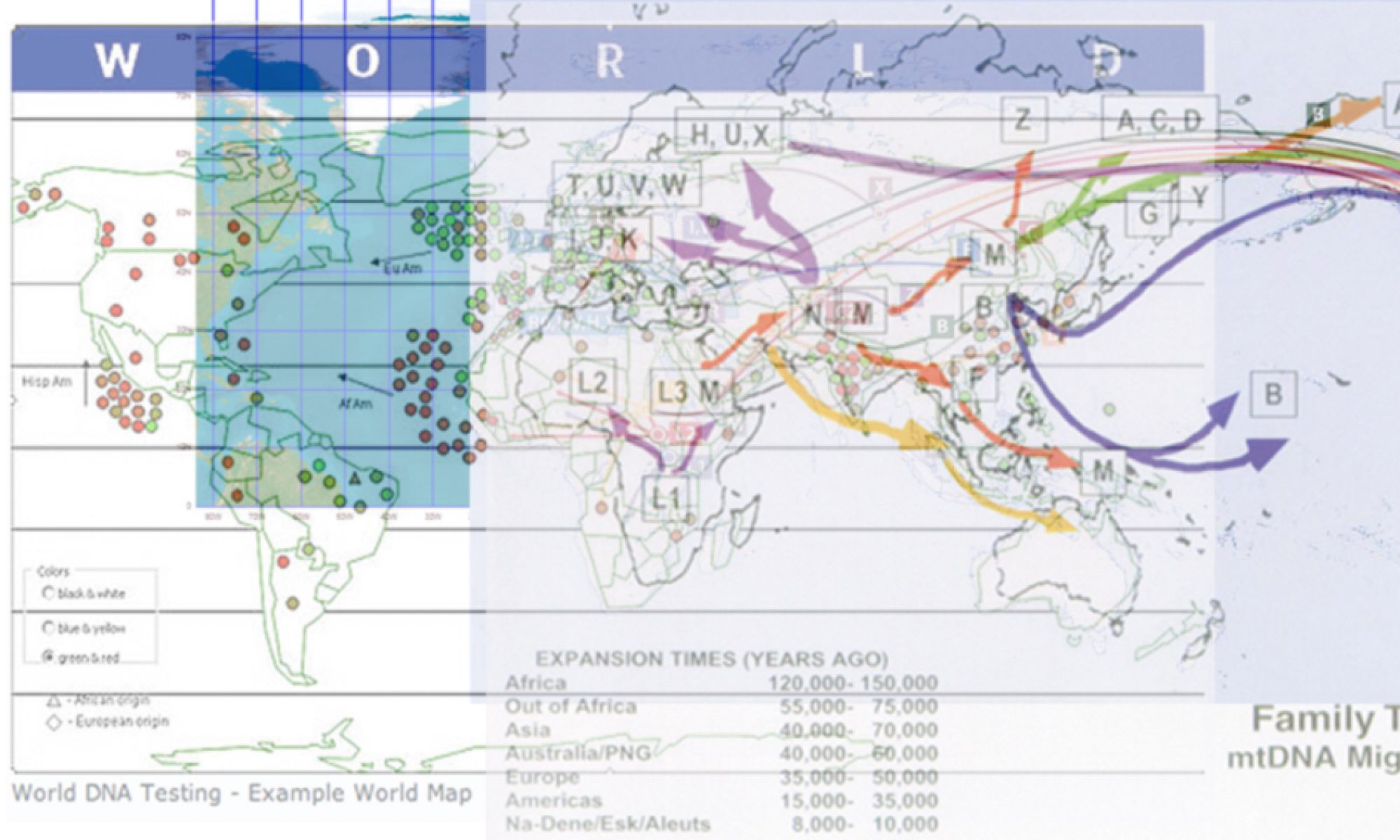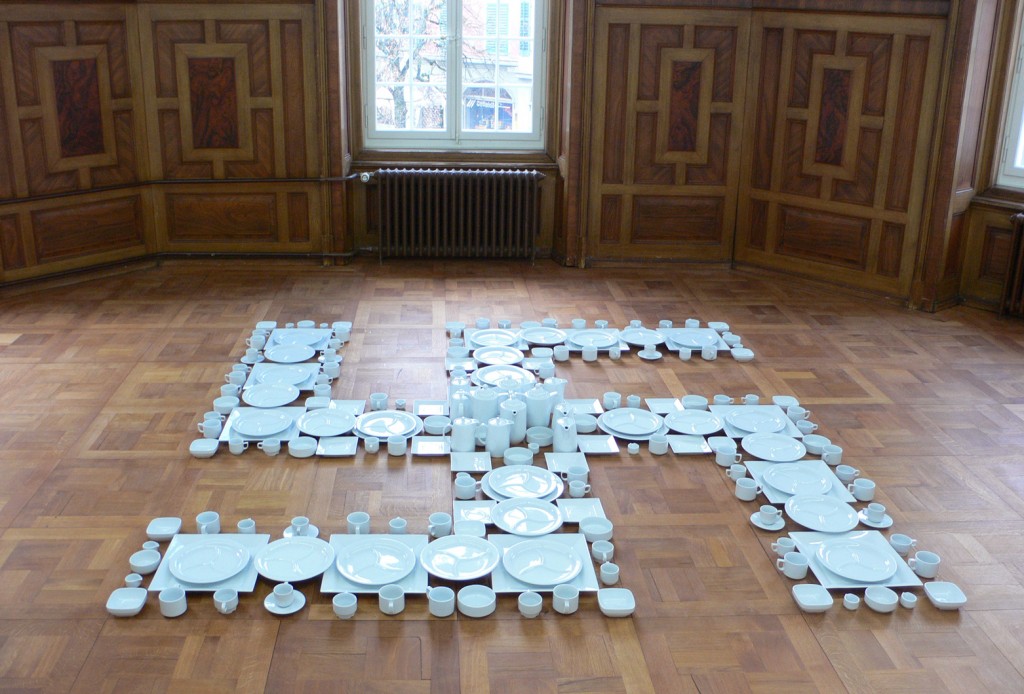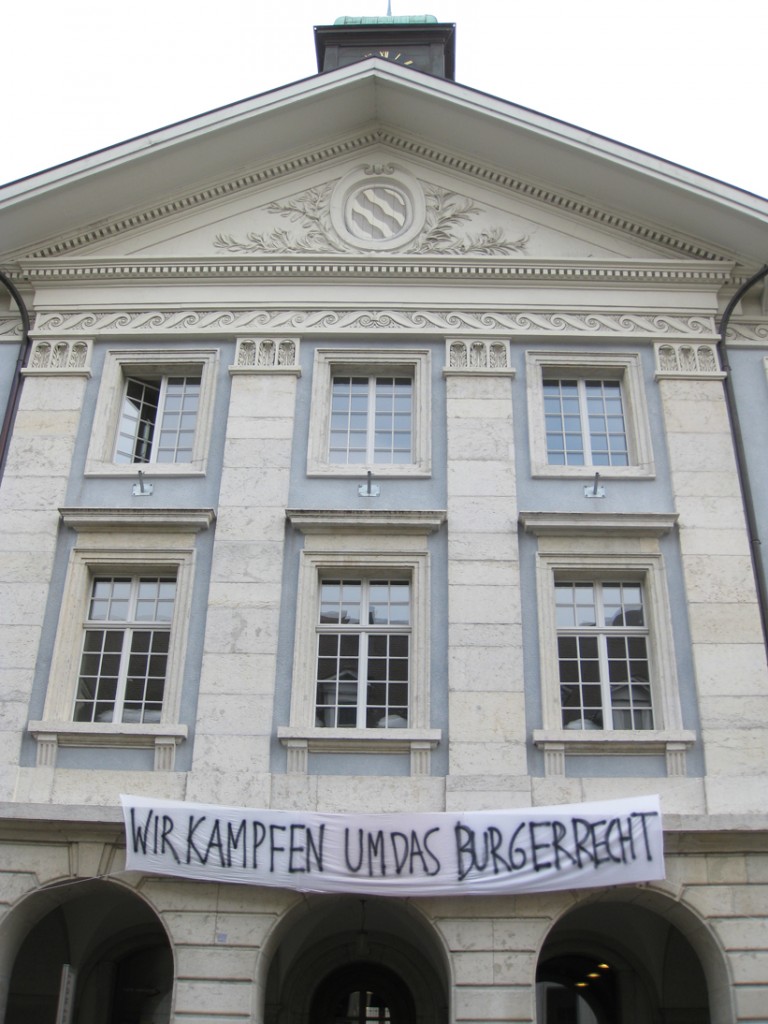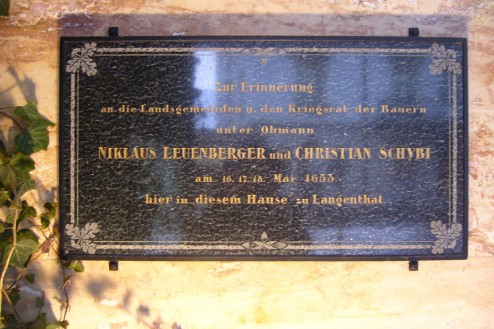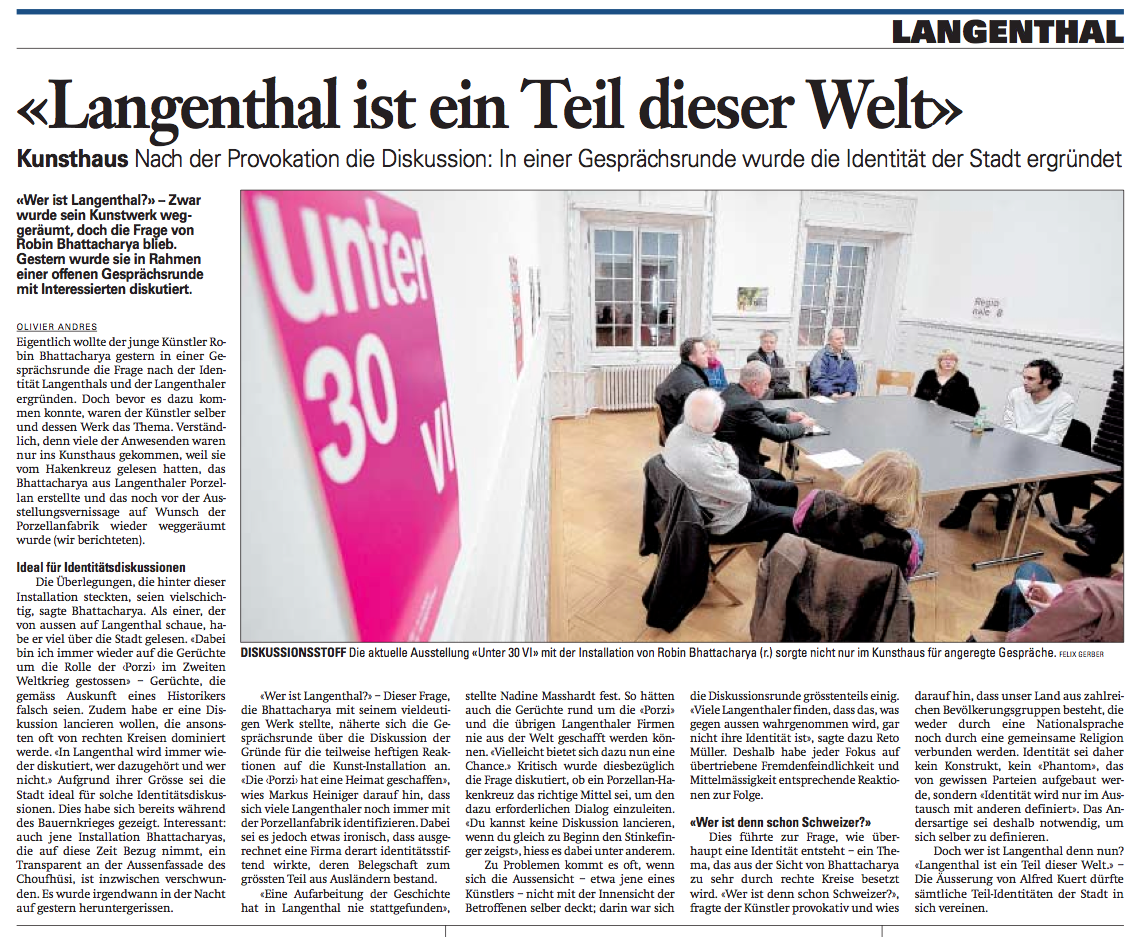unter 30 VI
November 27, 2008 – January 4, 2009
Kunsthaus Langenthal
Langenthal, Switzerland
Above image: Wer ist Langenthal?’ (‘Who is Langenthal?’) – Part I/IV
Installation made from ‘Langenthaler Porzellan’, porcelain from the famous local factory
As a winner of the Kiefer-Hablitzel Award, I was invited to present a new work at the exhibition ‘Unter 30 VI’ at the Kunsthaus Langenthal. According to my usual methodology, I intensively researched the history of the place and discovered how the town in the middle of Switzerland repeatedly was a battleground for Swiss identity and civil rights issues. Be that in the Peasants War of 1653, when Langenthal was the headquarters of the rebels fighting against the privileges of the burghers of Zürich and Bern – or 280 years later, in a time when the German immigrants were the talk of the town and the rumour was making the rounds that the new, fully-automatic oven of the porcelain-factory was for the planned extermination camp that would be built there upon arrival of the Nazis.
Until today, with Langenthal being the only constituency in Switzerland with a Neo-Nazi in the city council. And where the construction of a minaret planned by the Muslim community of Langenthal caused the discussion that led to the ban of minarets in Switzerland.
“Who is Langenthal?“ explores this ever-returning question of who belongs and does not, in four emblematic parts. Especially Part I, the swastika made of Langenthal porcelain, caused large media attention and had to be removed by pressure from the company that loaned the material. Also Part II was vandalised over night and had to be restored during the course of the exhibition.
But the issue regarding the rumours of the porcelain-oven was discussed in the public sphere and the necessity of historical investigation was repeatedly confirmed. In the wake of this a former undercover government agent broke his silence and explained to the press how the rumour of the oven was used as a psychological weapon to intimidate opponents of the Nazis working at the porcelain factory during WWII. (“He threatened we would be cremated” – Mittelland Zeitung, 17th December 2008).
‘Wer ist Langenthal?’ (‘Who is Langenthal?’) – Part II/IV
Banner with the writing:
‘WIR KAMPFEN UM DAS BURGERRECHT’ (‘WE FIGHT FOR CIVIL RIGHTS’, without Umlauts, thus in a Swiss immigrant accent)
Installation on facade of Kunsthaus Langenthal
‘Wer ist Langenthal?’ (‘Who is Langenthal?’)
Part III / IV
New illumination for commemorative plate for the peasants-uprising of 1653
on the facade of today’s Ristorante Mamma Mia, Marktgasse, Langenthal
‘Wer ist Langenthal?’ (‘Who is Langenthal?’) – Part IV / IV
Public Discussion on the topic:
‘Who is Langenthal?’unter 30 VI
27. November 2008 – 4. Januar 2009
Kunsthaus Langenthal
Langenthal, Schweiz
Oben: Wer ist Langenthal?’ (‘Who is Langenthal?’) – Teil I/IV
Installation aus Langenthaler Porzellan, aus der örtlichen Porzellan-Fabrik
Als Gewinner des Kiefer-Hablitzel Stipendiums, war ich eingeladen in der Ausstellung Unter 30 VI im Kunsthaus Langenthal ein neues Werk zu präsentieren. Entsprechend meiner Vorgehensweise, setzte ich mich intensiv mit der Geschichte des Ortes auseinander und entdeckte wie die Stadt in der Mitte der Schweiz immer wieder Austragungsort schweizerischer Iden- titätskämpfe um Bürgerrechte war.
Sei dies im Bauernkrieg von 1653, als Langenthal das Hauptquarti- er der Aufständischen war im Kampf gegen die Vorrechte der Burger Berns und Zürichs – oder 280 Jahre später, zu der Zeit in der die Deutschen Emigranten in der Stadt zu Reden gaben und das Gerücht umging, der neue voll-automatische Brennofen der Porzi sei für das von den Deutschen geplante Vernichtungslager, das bei Einmarsch der Nazis dort errichtet werden sollte. Bis heute, wo Langenthal die einzige Gemeinde in der Schweiz mit einem Neo-Nazi im Stadtrat ist und der von der muslimischen Gemeinde Langenthals angestrebte Bau eines Minaretts die Diskussion auslöste, welche zur Initiative für ein Verbot von Minaretten in der Schweiz führte.
„Wer ist Langenthal?“ thematisiert diese wiederkehrende Frage, wer dazugehört und wer nicht, in vier emblematischen Teilwerken. Besonders Teil I, das Hakenkreuz aus Langenthaler Porzellan, erregte mediales Aufsehen und musste, auf Druck des Leihgebers des Materials -der Porzellanfabrik Langenthal- wieder entfernt werden.
Auch Teil II wurde über Nacht vandalisiert und musste noch während der Ausstellung restauriert werden. Doch die Diskussion über das Gerücht des Porzellanofens wurde in der Öffentlichkeit ausgetragen und die Notwendigkeit einer geschichtli- chen Aufarbeitung von verschiedenen Seiten bestätigt.
Aufgrund dessen brach ein ehemaliger Spion des Bundes erstmals sein Schweigen und bestätigte gegenüber der Presse, wie das Gerücht des Verbrennungsofens als psychologische Waffe zur Einschüchterung von Nazigegnern verwendet wurde. („Er drohte, wir würden kremiert werden“, MZ 17. Dezember 2008 – Siehe: Nach ‚Wer ist Langenhal?‘).
‘Wer ist Langenthal?’ – Teil II/IV
Banner mit der Aufschrift:
‘WIR KAMPFEN UM DAS BURGERRECHT’
Installation – Fassade des Kunsthaus Langenthal
Wer ist Langenthal? – Teil III/IV
Temporäre Beleuchtung für Gedenktafel:
“Zur Erinnerung an die Landsgemeinden u. den Kriegsrat der Bauern unter Obmann NIKLAUS LEUENBERGER und CHRISTIAN SCHYBI am 16 17 18 Mai 1653 hier in diesem Hause zu Langenthal”
Installation – Fassade des heutigen Ristorante Mamma Mia Marktgasse Langenthal
‘Wer ist Langenthal?’ – Teil IV / IV
Öffentliche Diskussion zum Thema: “Wer ist Langenthal?”
Am 27. November 2008, 18.00 -20.00 Uhr Sitzungszimmer Kunsthaus Langenthal
